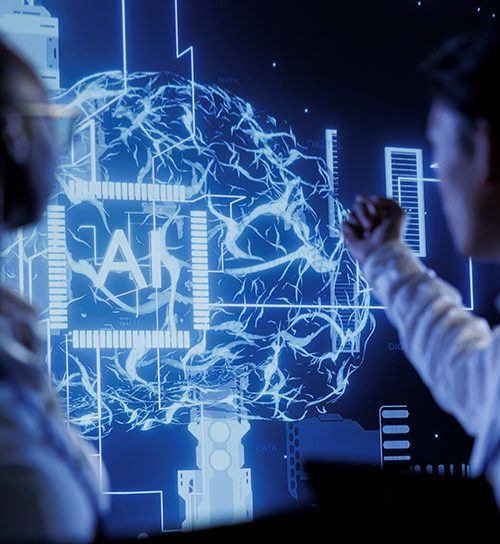Bridging the Skill Gap: Research-Backed Insights
on Workforce Readiness

The skill gap in today’s workforce is an urgent concern that has been growing over the years, and its widening could soon become a serious barrier to organizational competitiveness.
According to McKinsey, up to 375 million workers globally may need to transition to new roles in the coming years to meet the evolving demands of businesses. As industries face rapid technological shifts, fueled by Artificial Intelligence (AI), it’s not a question of whether businesses should act, but how quickly they can adapt. The speed of change is relentless with AI not only reshaping tech jobs but also impacting every sector of the workforce.
Rethinking Talent Development
The transformation is no more about making small adjustments. It requires a radical rethink of how organizations approach talent. The key to bridging the skill gap lies in creating skills-based organizations—businesses that put skills at the heart of hiring, learning, internal mobility, and even rewards.
By doing so, organizations can future-proof their workforce and enhance business resilience. But it’s not just about processes. It is also about people. Employees seek opportunities for personal growth, and when organizations align their upskilling efforts with employees’ career ambitions, they lay the foundation for long-term organizational success.
However, the question remains: How can companies address the widening skills gap?
Reskilling and Upskilling with Right Learn Tech
While many businesses have turned to hiring new talent as a quick fix, it’s clear that filling the gap isn’t solely about recruitment. Reskilling and upskilling initiatives are essential to ensure existing employees have the skills necessary for tomorrow’s challenges.
According to LinkedIn’s Leading with Learning report 64% of learning and development (L&D) professionals state that reskilling their existing workforce to address skill gaps is now a top priority. But the question remains: how can organizations implement these strategies effectively?
One solution lies in the role of technology,particularly learning technologies like Learning Management Systems (LMS) and Learning Experience Platforms (LXP).
These tools can transform how organizations tackle skill gaps by providing scalable, accessible, and personalized learning experiences. Learning technologies centralize training content, offering employees access to a wide array of e-learning materials, assessments, and interactive modules tailored to their roles and career goals.
The centralization of learning materials ensures that employees have the right tools at their fingertips, making it easier for them to develop the necessary skills. Moreover, with the help of AI-powered features, platforms can recommend personalized learning paths that are tailored to an individual’s specific job, skills, and aspirations, making learning more efficient and effective.
The use of data-driven insights is also another advantage that these platforms offer. LMS and LXP tools come equipped with solid analytics capabilities which enable organizations to track employee progress, measure skill acquisition, and identify gaps in real-time. This empowers L&D teams to adapt training programs swiftly so that employees get the necessary support when they need it. These data-driven insights provide organizations with the actionable intelligence they need to continuously improve learning initiatives and ensure they are aligned with business objectives.
Also Read: What’s the Difference Between Skills and Competencies?
Investing in Future-Proof Skilling with AI
While technical skills are at the core of workforce readiness, soft skills are just as important. The rise of AI and digital transformation has created an increasing demand for hybrid skill sets—those that combine technical expertise with soft skills like emotional intelligence, problem-solving, and collaboration.
In addition to investing in hard and soft skills development, organizations must adopt forward-thinking strategies to anticipate future skill needs. Predictive analytics can help businesses forecast the skills they will need in the coming years.
By leveraging data from performance metrics, industry trends, and external labor market insights, companies can create proactive strategies to address future gaps. AI-driven tools can also help by enhancing talent management and enabling more skills-based recruitment practices.
The integration of AI into the learning process is also crucial for future-proofing the workforce. AI allows for personalized learning experiences by adapting content based on an individual’s learning style, progress, and needs.
AI-powered LMS and LXP platforms enable employees to engage in learning in the flow of work, where they can access relevant learning materials at the moment they need them leading to just-in-time (JIT) learning. This approach not only makes learning more timely but also ensures employees acquire the necessary skills without disrupting their daily tasks.
Final Words
Ultimately, bridging the skill gap is about aligning business objectives with employee development. When organizations prioritize skills-based learning and create environments that encourage continuous growth, they don’t just prepare their employees for the future—they position their business to thrive in a rapidly changing world.
In this landscape, upskilling isn’t just an initiative. It is the foundation for growth and long-term success.











